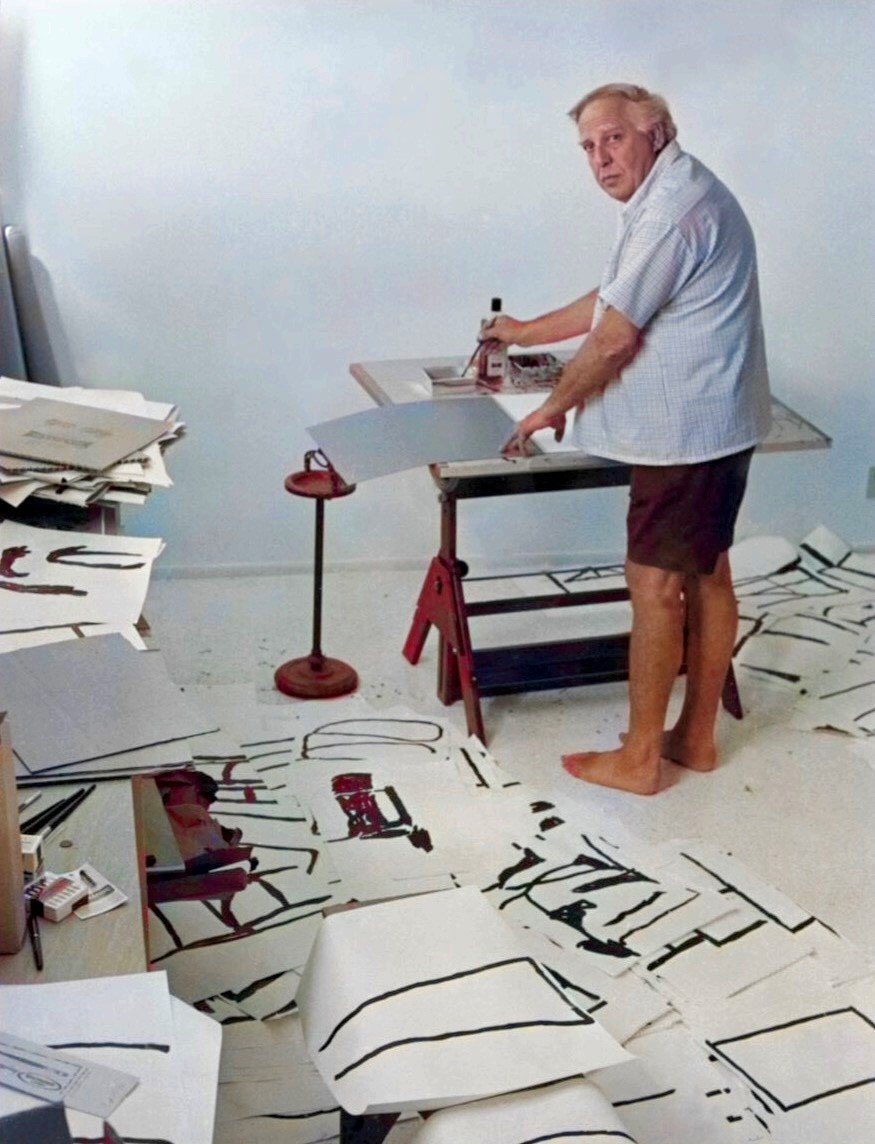The Groove Issue 94 - Why Humor and Creativity Are Indispensable To You
WHY HUMOR AND CREATIVITY ARE INDISPENSABLE TO YOU
There have been so many unsettling events happening in the past two-and-a-half years that sometimes the only way to cope with them is to resort to humor. That’s not to diminish the fact that we have been through trying times and that so many of these moments carry with them sadness, heaviness, and discomfort. But one of the greatest weapons of any semi-healthy society is humor and satire.
Creativity and humor are fully linked: they are uniquely human, and they require surprise, insight, novelty, incongruency, authenticity and risk-taking.
Daniel Berlyne, a modern psychologist who spent his life studying humor, found that the parallels between humor and creativity are so intimate because both aim at the violation of an expectation, attracting our attention in unanticipated ways.
Let Them Laugh
Philip Guston in Sarasota, FL in 1967.
Since 2020, Philip Guston has been a part of every conversation in art circles because of the postponement of his four museum shows. (One of them is currently up at the Museum of Fine Arts in Boston and then it will travel to the Museum of Fine Arts in Houston, the National Gallery in Washington DC and the Tate Modern in London)
What most people embroiled in that self-righteous chattery missed is how Guston used humor in his late years and how his paintings paved the way for the indelible mark on American art that he left after his passing in 1980.
Philip Guston, San Clemente, 1975, oil on canvas.
Guston started as a figurative painter in the 1930s. But after being surrounded by Abstract Expressionists in New York he became one himself and achieved success and renown for his work in that style. By the late 1960s, he became dissatisfied with repeating himself and went back to figuration, this time with works filled with humor.
He made fun of himself, Nixon, political extremists and the KKK. He understood the power to disarm anyone with hilarity. “If someone bursts out laughing in front of my painting, that is exactly what I want and expect,” he said in 1972.
Philip Guston, Couple in Bed, 1977, oil on canvas.
He painted the anxieties of being an artist and exaggerated the mundane, pointing out that “I’ve always had the feeling that art is nourished by the common and ordinary.”
This is where things become surprising for the viewer: giant hands or feet, frightening cult members rendered powerless and caricaturized, or the depiction of the male figure in a stiff, curled fetal position clutching paintbrushes in the intimacy of a domestic scene.
Needless to say, critics and peers were shocked about the turn that Guston had taken after his success as a “serious” abstract painter. But Guston didn’t bat an eye, and he continued with the absurdities that still make people laugh, if they are willing to understand the context of his time.
While not every artist should paint humorous scenes, I believe everyone who’s looking to enhance their creativity should be open to incorporating more humor in their lives.
Harnessing Humor in Business
But humor is subjective, you may say. If you tell a joke at work, someone may not find it funny. Peter McGraw, a professor of marketing and psychology and the author of The Humor Code along with journalist Joel Warner, traveled the world looking for what makes people laugh.
They concluded that humor depends on a “benign violation” - or something that is “wrong, unsettling or threatening” but at the same time is “okay, acceptable or safe.” To achieve this, it’s imperative to know your crowd to see how far you can go. But as most people who are creative know, every time you take a chance, you also know that you could fail.
Two professors from Stanford University’s Graduate School of Business, Jennifer Aaker and Naomi Bagdonas, wrote Humor Seriously, and went deep into the science and research of what humor can do for people in companies and beyond.
They found that leaders with a sense of humor are seen as 27% more motivating and their teams are more than twice as likely to solve a creativity challenge.
Humor Can Get Your Foot on The Door
Having a sense of humor can make you stand out too. Spanx founder Sara Blakely first approached the head buyer from Neiman Marcus by mailing him a single shoe and a handwritten note that said, “Just trying to get my foot in the door; have minutes to chat?” The buyer called Sara back — that act of humor proved more influential than hundreds of emails and calls, not to mention it was way more creative too.
If you are unsure about adding a moment of humor at work, instead of asking yourself if you are being funny, ask “how would this make other people feel?”
To integrate more of these moments, act in the same way as if you were intent on being creative: pay close attention to things that you find amusing, different or weird and keep notes of them. Connect them to your work so your colleagues can also relate. (And hopefully laugh too!)
UNLEASH YOUR CREATIVE GENIUS
I’ve put together a free webinar for those of you who are not members of my online course, Jumpstart. If you’d like to watch it, please register here.
HOW CREATIVITY RULES THE WORLD
I am super thrilled that my book won the International Book Award in the Business/Entrepreneurship category!
Have you already gotten your copy?
It’s in three formats: hardcover, eBook and audiobook. Get it here.
TEDX TALK
Have you already watched my TEDx Talk: “NFTs, Graffiti and Sedition: How Artists Invent The Future”?
I share three lessons I have learned from artists that always work for anyone in their careers. Watch it here.



